Just as nature weaves life into every corner of our world, you can transform your living spaces with strategically placed indoor plants. You’ll discover how to maximize both aesthetics and functionality through nine distinctive plant decoration approaches, each tailored to specific rooms in your home. From creating dramatic living walls to designing productive herb gardens, these practical solutions will show you how to bring the outdoors in while solving common design challenges.
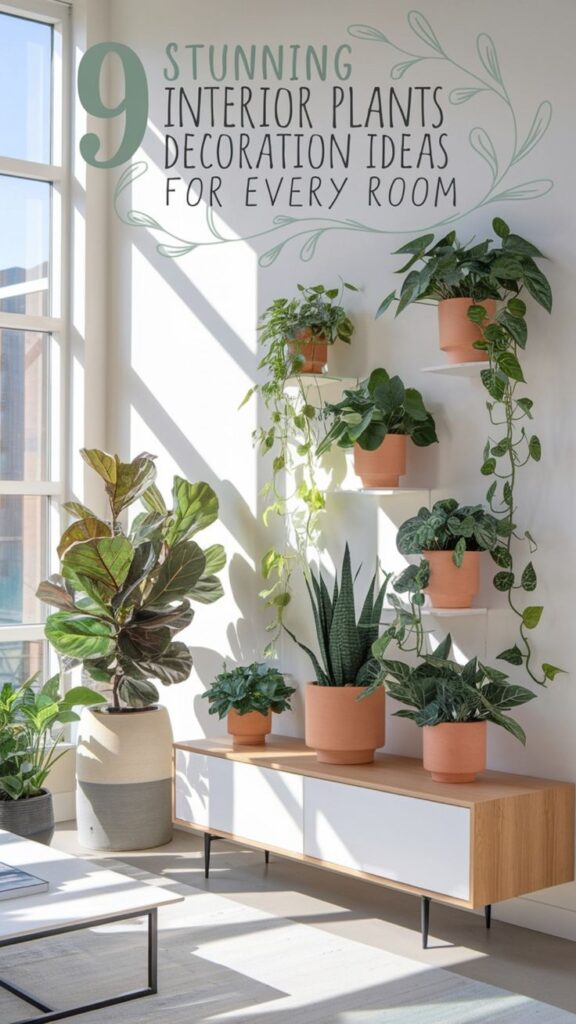
Contents
- 1 Living Walls: Creating Vertical Gardens in Small Spaces
- 2 Statement Plants for Grand Entryways
- 3 Bathroom Oasis With Tropical Plants
- 4 Kitchen Herb Gardens With Style
- 5 Bedroom Plant Sanctuaries for Better Sleep
- 6 Home Office Green Zones for Productivity
- 7 Natural Room Dividers With Climbing Plants
- 8 Window Displays With Light-Loving Plants
- 9 Creative Plant Shelf Arrangements
Living Walls: Creating Vertical Gardens in Small Spaces
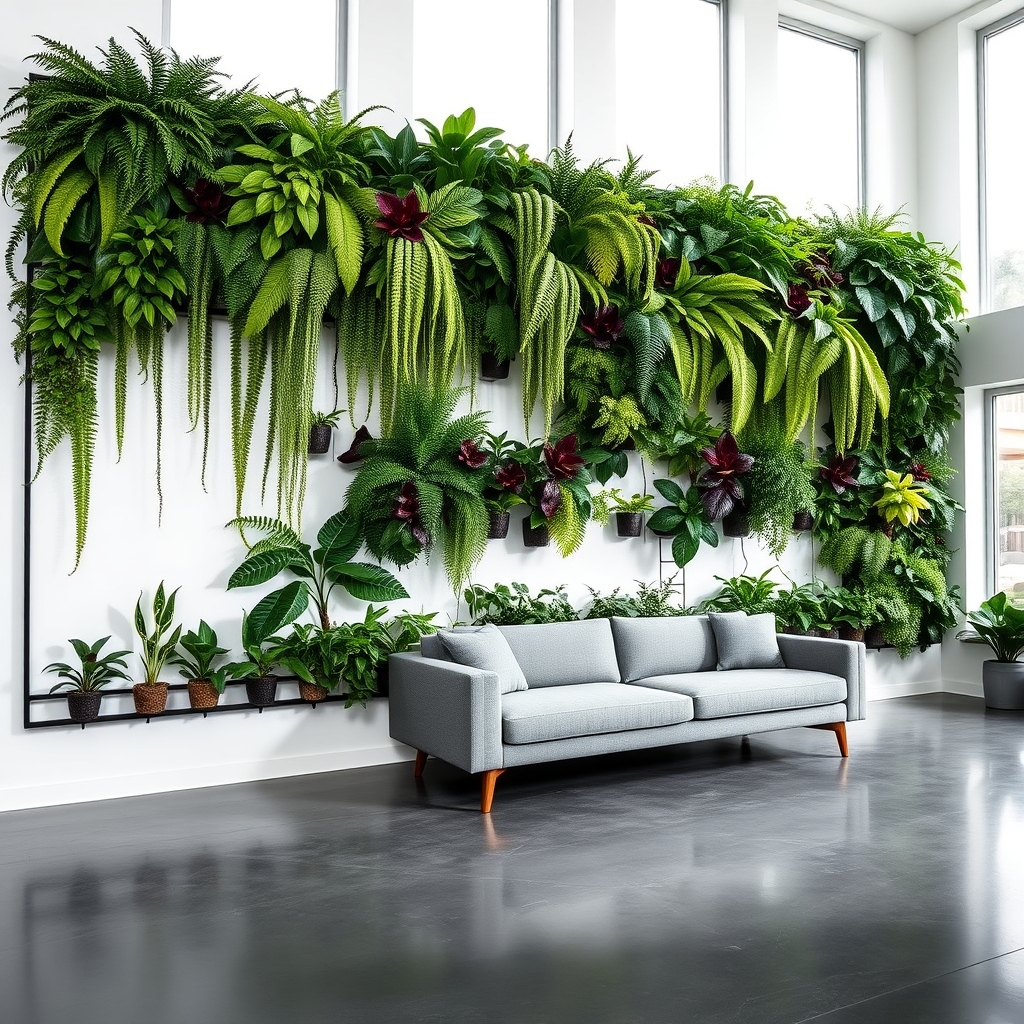
Living walls, also known as vertical gardens, transform ordinary indoor walls into lush, green installations by mounting plants vertically rather than horizontally. These space-saving gardens typically feature a mix of trailing vines, ferns, succulents, and tropical plants arranged in modular panels or pocket systems attached to wall structures.
The unique feature of living walls lies in their efficient use of vertical space, allowing plant coverage without sacrificing floor area. Plants are supported by growing medium contained within specialized panels, often incorporating built-in irrigation systems that maintain proper moisture levels.
These installations can range from simple DIY pocket planters to sophisticated hydroponic systems with automated watering. Common configurations include:
- Grid-pattern arrangements using individual plant holders
- Continuous living tapestries created with densely packed plants
- Geometric designs incorporating multiple plant species
- Modular panels that can be easily maintained or replaced
Living walls serve both decorative and practical purposes, acting as natural air purifiers while adding texture, color, and life to interior spaces where traditional gardening might be impractical.
Statement Plants for Grand Entryways
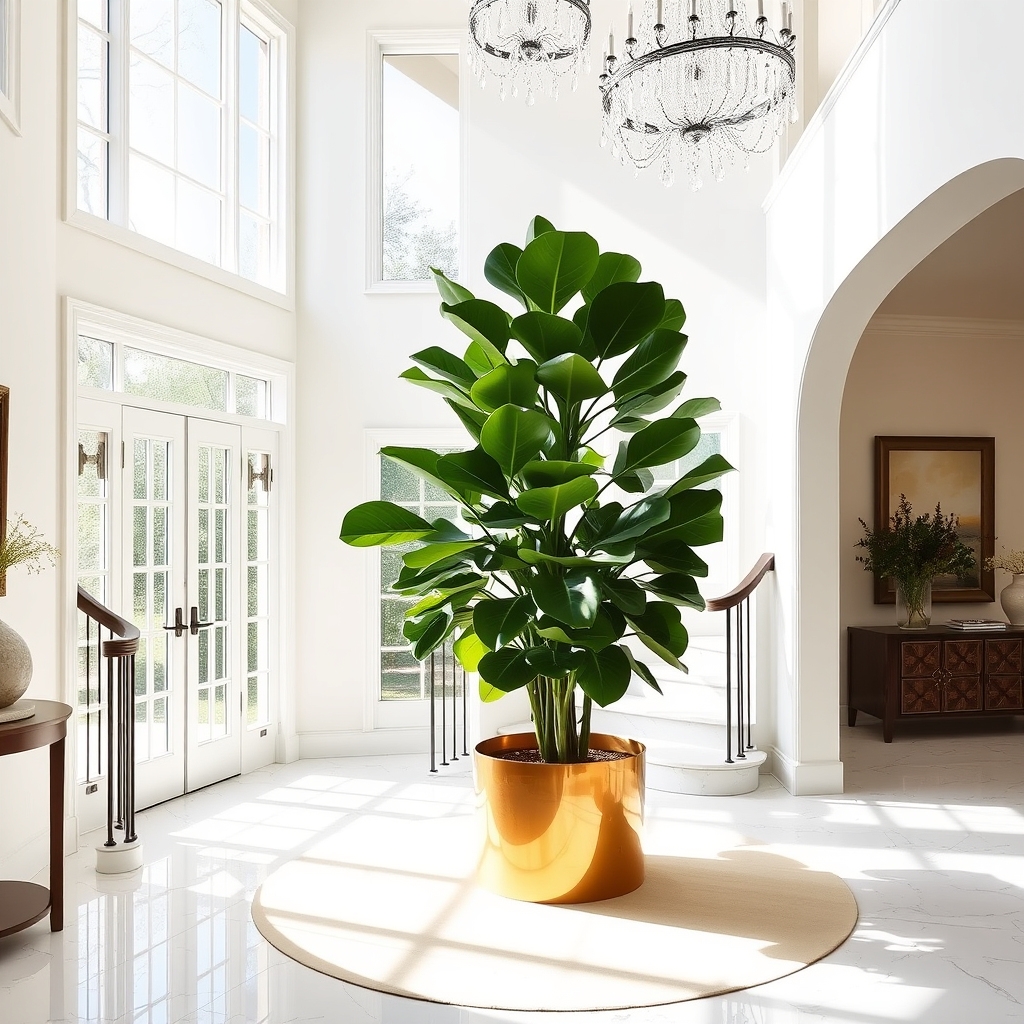
Statement Plants for Grand Entryways are large, dramatic indoor plants strategically placed in entrance areas to create powerful first impressions.
These plants typically stand 6-12 feet tall and feature bold architectural forms or striking foliage patterns. Common choices include Fiddle Leaf Figs with their broad, violin-shaped leaves, towering Bird of Paradise plants with their distinctive paddle-like foliage, or elegant Kentia Palms with sweeping fronds.
These plants often occupy oversized decorative pots or planters positioned near doorways, staircases, or in foyer corners. Their substantial size and visual impact serve to anchor the space while drawing the eye upward, making them ideal for spaces with high ceilings or large open areas.
Bathroom Oasis With Tropical Plants

Bathroom Oasis With Tropical Plants transforms an ordinary bathroom into a lush, spa-like retreat using moisture-loving tropical plants.
Large-leafed specimens like peace lilies, orchids, and bird’s nest ferns thrive in the humid environment, positioned strategically on windowsills, countertops, and hanging planters.
The green foliage creates a striking contrast against white bathroom fixtures and tiles, while trailing plants cascade from shower rods or high shelves.
Natural light filters through the leaves, casting gentle shadows and creating a serene, jungle-inspired atmosphere.
This arrangement capitalizes on the bathroom’s inherent humidity and warmth, making it an ideal environment for tropical plant growth while providing a calming, resort-style aesthetic.
Kitchen Herb Gardens With Style
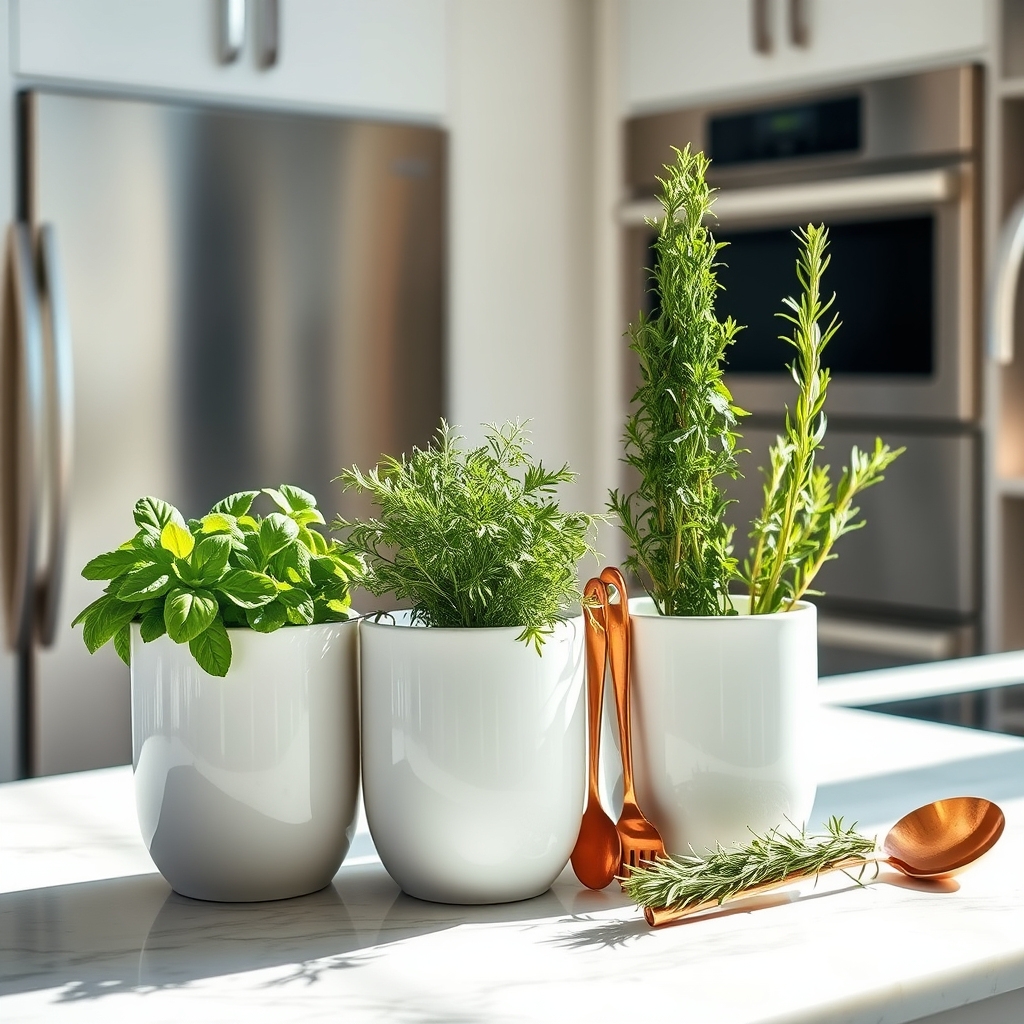
Kitchen herb gardens with style combine functionality and aesthetics, featuring small potted herbs arranged in decorative ways within the kitchen space.
These living arrangements typically include culinary favorites like basil, thyme, rosemary, and mint displayed in coordinated containers, wall-mounted planters, or tiered stands.
Common design elements include matching ceramic pots, rustic wooden boxes, vertical garden systems, or window-sill installations with adequate lighting.
The gardens often incorporate design elements that complement kitchen décor while keeping fresh herbs within easy reach for cooking.
Unique features can include self-watering containers, grow lights for darker spaces, or creative labeling systems using chalkboards or decorative markers.
These styled herb gardens serve as both a practical cooking resource and a vibrant green accent in kitchen design.
Bedroom Plant Sanctuaries for Better Sleep

Bedroom Plant Sanctuaries for Better Sleep transform sleeping spaces into tranquil retreats using carefully selected air-purifying and calming plants.
These green sanctuaries typically feature a combination of low-maintenance plants placed strategically around the room – on nightstands, window sills, and floor corners.
Key elements include:
- Peace lilies or snake plants near the bed for air filtration
- Hanging pothos or philodendrons to create cascading greenery
- Lavender plants for natural aromatherapy
- Small succulents on bedside tables
- Large floor plants like bamboo palm in room corners
The arrangement emphasizes a minimalist approach, avoiding overcrowding while maintaining enough greenery to improve air quality and create a soothing atmosphere.
Plants are often displayed in coordinated planters that match the bedroom’s color scheme, using natural materials like ceramic, wood, or woven baskets.
This plant sanctuary concept specifically focuses on species known to release oxygen at night and remove common bedroom air pollutants, promoting better sleep quality while adding natural beauty to the space.
Home Office Green Zones for Productivity

Home office green zones are dedicated plant-filled areas within a workspace that combine functionality with biophilic design to enhance productivity and wellbeing.
These zones typically feature a mix of desk plants, floor plants, and hanging greenery strategically placed around the work area.
Key elements include:
- Desktop arrangements with small succulents or air plants that don’t obstruct workspace
- Vertical garden installations on walls facing the desk
- Larger floor plants like peace lilies or snake plants in corners
- Hanging planters with trailing varieties near windows
- Natural wood furniture and surfaces to complement the greenery
- Plant shelving units that double as room dividers
The unique feature of home office green zones is their dual purpose: they serve as both natural air purifiers and stress-reducing visual elements while maintaining a professional workspace atmosphere.
Plants are arranged to create distinct boundaries between work and relaxation areas, helping to establish a focused environment without feeling clinical or sterile.
Natural Room Dividers With Climbing Plants
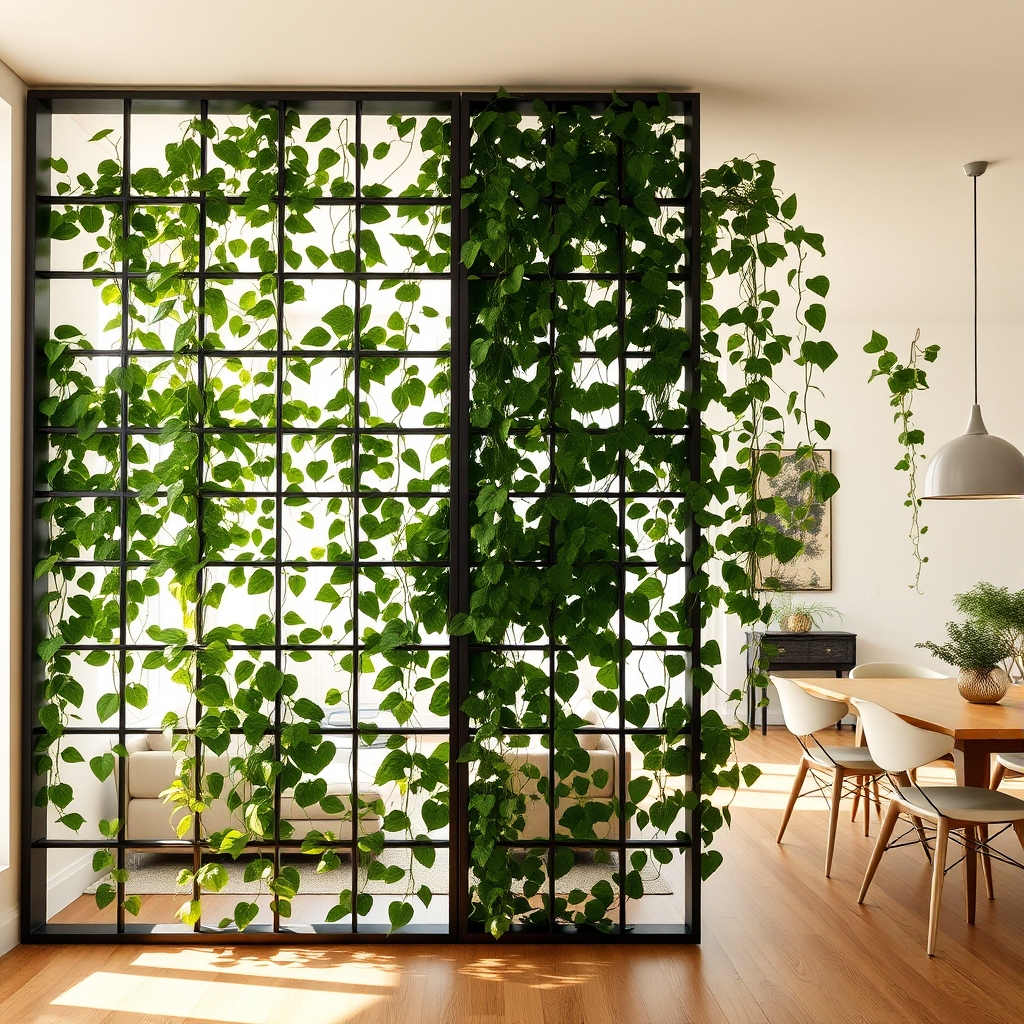
Natural room dividers with climbing plants consist of vertical structures adorned with climbing or trailing plants to create living walls that separate spaces.
These dividers typically feature metal frames, wooden trellises, or rope systems that support vines and climbing plants like pothos, ivy, or jasmine. The plants grow upward and outward, forming a green screen that adds both privacy and natural beauty to the space.
The unique feature of these living dividers is their dual functionality – they effectively partition areas while simultaneously purifying the air and bringing nature indoors.
The organic appearance changes over time as plants grow and fill out the structure, creating an ever-evolving design element.
These dividers can be freestanding or anchored, and their height and width can be customized to suit specific spatial needs.
Window Displays With Light-Loving Plants
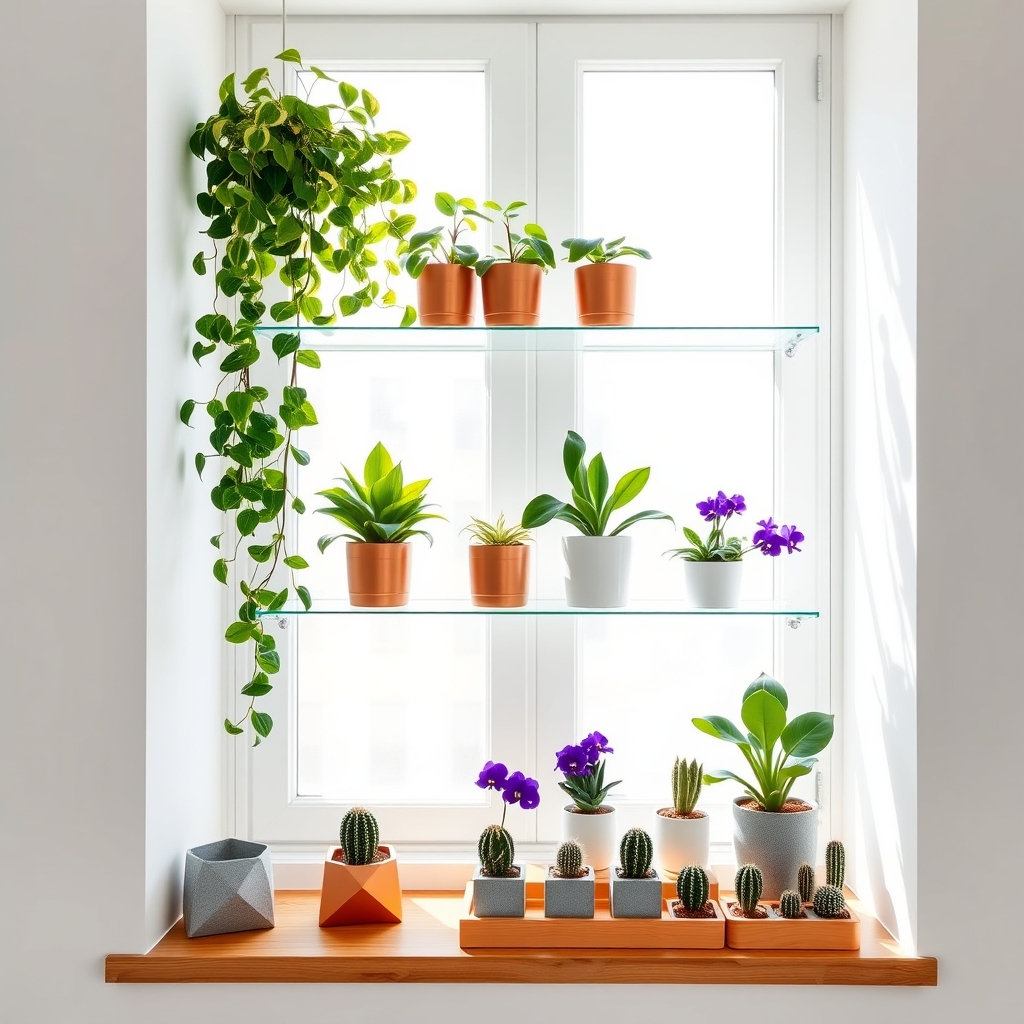
Window displays with light-loving plants create vibrant living arrangements that maximize natural sunlight exposure. These displays typically feature plants arranged on windowsills, hanging planters, or tiered shelving placed near windows.
Sun-loving specimens like succulents, cacti, African violets, and pothos are strategically positioned to capture optimal light while creating an aesthetically pleasing view from both inside and outside the home.
Key features include:
- Graduated plant heights for visual interest
- Clear glass or transparent containers to maximize light penetration
- Plants with varied leaf shapes and colors
- Proper spacing between plants to prevent overcrowding
- Optional decorative elements like colored stones or moss
- Window-mounted shelves or suction cup planters
- Trailing plants to frame window edges
This arrangement style serves dual purposes: providing plants with essential light requirements while transforming windows into natural focal points within the room.
Creative Plant Shelf Arrangements
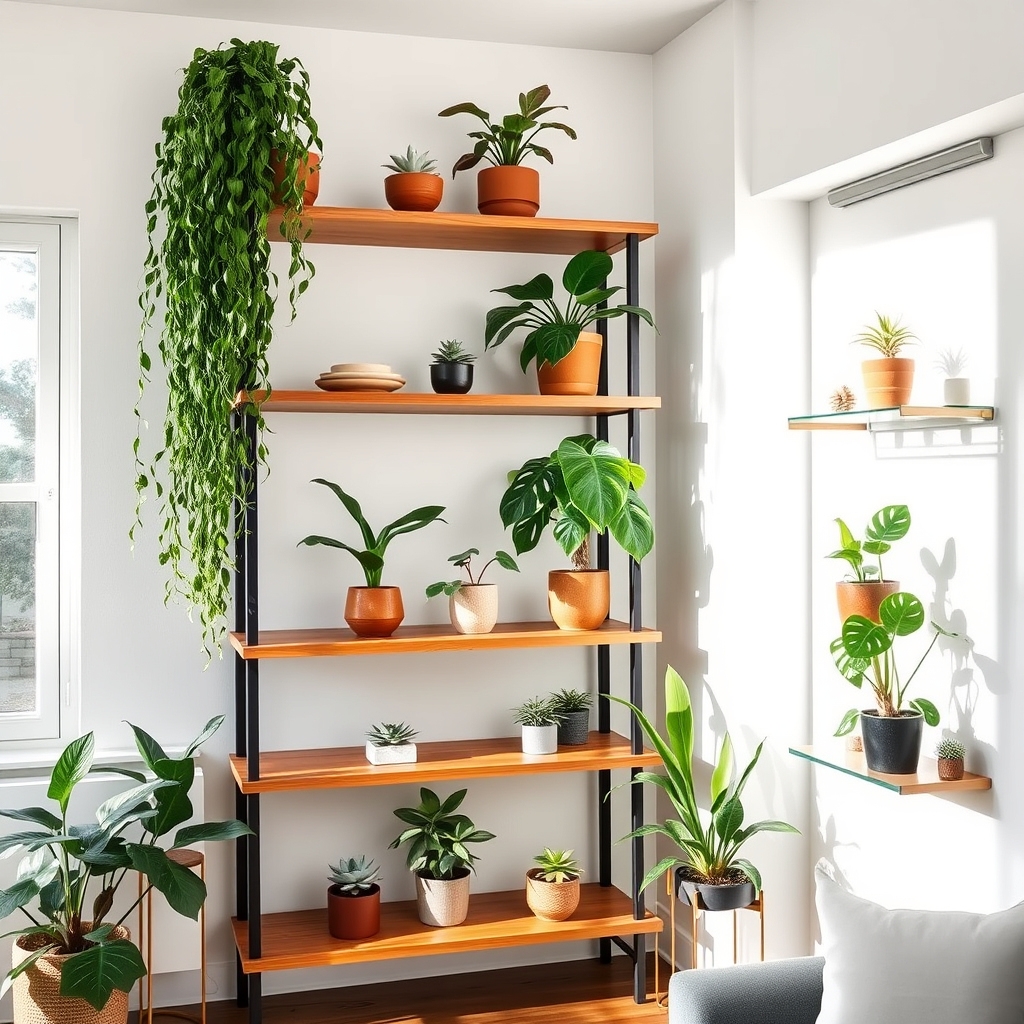
Creative Plant Shelf Arrangements incorporate multiple levels and surfaces to display indoor plants in visually appealing configurations.
These arrangements typically feature shelving units, floating shelves, or tiered stands positioned against walls or in corners, maximizing vertical space while creating depth and dimension.
Key characteristics include:
- Varying heights and depths of plants
- Mix of shelf materials (wood, metal, glass)
- Staggered placement of pots and containers
- Combination of trailing and upright plants
- Strategic grouping by size, color, or species
- Integration with wall decor or window spaces
- Use of decorative plant stands and risers
- Balanced negative space between plants
These arrangements often serve as living focal points in rooms, allowing plant enthusiasts to showcase their collections while maintaining organization and accessibility for plant care.
